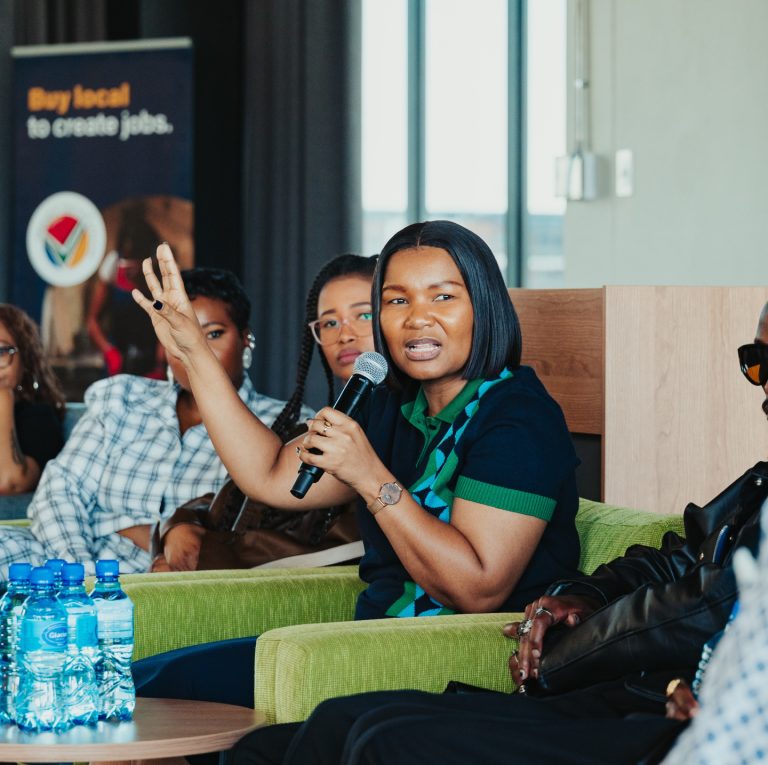The South African Fashion & Beauty Entrepreneur Summit (SAFBES 2025) has highlighted the growing ambition of the local creative economy. Designers, entrepreneurs, and policymakers gathered at The Empire – Conference and Events Venue in Johannesburg, to discuss the business of fashion and the future of beauty in South Africa. Beyond the glamour and creative displays, the discussions exposed a structural issue that continues to hinder the sector’s growth — South Africa’s dependency on imported textiles, raw materials, and manufacturing inputs.
Over 98% of textiles and fabrics sold in South Africa are imported, mainly from China, India, and Turkey. This reliance on foreign supply chains has created an uneven market, where local designers and retailers depend on global imports while struggling to access affordable local production. It’s a costly dependency. The country imported an estimated R6.25 billion worth of textiles in January 2025 alone — a 33% increase from the previous year. Since 2005, more than 120,000 jobs have been lost in the clothing and textile sector as factories closed and cheap imports flooded the market. The decline of textile factories — once vibrant across Cape Town, Durban, and Johannesburg — has left a void in domestic manufacturing capacity.
The result is a value chain that exports talent but imports nearly every other input. This imbalance constrains profitability, job creation, and competitiveness, while also exposing the industry to exchange rate fluctuations, as most materials are priced in foreign currencies.
Although South Africa’s unemployment rate remains above 32%, the textile and apparel manufacturing sector — which historically employed thousands — continues to shrink. While government initiatives exist to support small-scale designers, large-scale production infrastructure remains underdeveloped.
Instead of rebuilding South Africa’s manufacturing base, the growing reliance on imported textiles has diverted potential investment away from local factories. Industry observers note that this weakens the country’s ability to compete regionally under the African Continental Free Trade Area (AfCFTA), which could otherwise enable South African producers to export finished garments and beauty products across the continent.
“Every imported fabric represents a missed opportunity for domestic employment and industrial growth,” one SAFBES panellist observed.
A standout example discussed during the summit was House of Sebo, a government-funded fashion enterprise that has succeeded in integrating creativity with local economic development. Supported through public funding, House of Sebo demonstrates how direct state investment can strengthen local production capacity and enhance value retention within South Africa.
The brand’s leadership emphasised the importance of investing within African markets to reduce imports and increase exports — creating a self-sustaining industry capable of contributing to GDP growth. Their model aligns with the broader goal of developing industrial ecosystems that support design, manufacturing, and retail within the same economic loop.
The summit also reignited debate around international partnerships. The Minister of Arts and Culture, Gayton McKenzie, recently travelled abroad to explore collaborations with global retailers such as SHEIN. While such partnerships aim to attract investment, critics argue that similar funding could have a greater long-term impact if directed towards reviving local factories and textile training programmes.
“It is easy to romanticise international collaboration, but the real opportunity lies in restoring South Africa’s own production base,” several industry voices stated during the SAFBES fashion panel discussion.
Developing local capacity would reduce dependence on imports, stabilise the supply chain, and enable South African products to compete regionally and globally. It would also allow pricing in South African rand (ZAR) rather than volatile foreign currencies, improving cost efficiency for designers and manufacturers alike.
The beauty industry mirrors these trends. From makeup packaging to hair products, South Africa continues to import most of its cosmetic ingredients and containers. Yet, given the country’s access to natural resources and chemical expertise, the sector holds significant potential for local manufacturing.
Expanding production capacity in both fashion and beauty could inject billions of rand into the economy, reduce unemployment, and strengthen regional trade under AfCFTA. Building domestic supply chains would not only increase exports but also position South Africa as a continental hub for design, production, and distribution.
SAFBES 2025 reinforced the idea that South Africa’s creative industries can be a powerful engine for economic recovery — but only if the sector is integrated into a broader industrial policy agenda. The opportunities lie not just in design but across the entire production ecosystem: textiles, logistics, beauty formulation, and retail.
With targeted investment, skills development, and policy alignment, fashion and beauty could evolve from cultural symbols into strategic economic sectors. The challenge is less about creativity and more about capacity. Fashion, after all, is not just art — it’s economy. And for South Africa, it may well be the next great business frontier.


